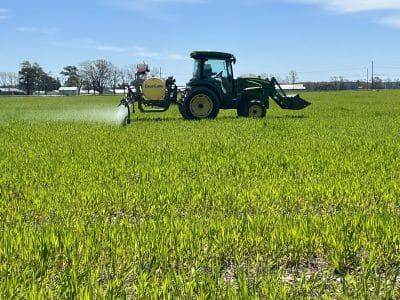How much biomass do you need for weed suppression? The more you let a cover crop grow, the greater effect that biomass will have on weed suppression. Cover crops suppress weeds when they are actively growing, by capturing sunlight and competing for resources such as water and nutrients. A high biomass cover crop will create a nice mulch once terminated that will physically suppress weeds from germinating and emerging through that mulch. Once terminated, the cover crop will provide additional weed suppression. Cover crops tends to be more effective at suppressing small seeded summer annual weeds like pigweed and foxtail when you have sufficient biomass. But how much biomass do you need? Weed suppression is being evaluated in studies like the one shown in this video across the U.S. to answer this question. How does climate and soil interact with the amount of biomass you get to suppress weeds and
We are finding in Maryland that when we have good precipitation and warm summers that more cover crop biomass is needed to suppress weeds, compared to some of our colleagues from the north central part of the US. When managing high residue cover crops, there are a lot of issues to consider, such as achieving complete termination and planting into the thick residue. We are finding that some farmers are getting good results when planting green.


